
Julius Charles Hare (13 September 1795 – 3 January 1855) was an English theological writer.

Julius Charles Hare (13 September 1795 – 3 January 1855) was an English theological writer.
He was born at Valdagno, near Vicenza, in Italy. His parents were Francis Hare-Naylor and the painter Georgiana Shipley, a daughter of Bishop Shipley. [1] Augustus William Hare was his brother, and his great-grandfather, Francis Hare, was bishop of St Asaph.
He came to England with his parents in 1799, but in 1804/05 spent a winter with them at Weimar, Germany, where he met Goethe and Schiller, and took an interest in German literature which influenced his style and sentiments throughout his career. On the death of his mother in 1806, Julius was sent to Tonbridge School, where he remained until 1812, when he entered Trinity College, Cambridge. [2] There he became fellow in 1818, and after another trip abroad he began to read law in London in the following year. From 1822 to 1832 he was assistant tutor at Trinity College. [3]
Turning from law to divinity, Hare took holy orders in 1826; and, on the death of his uncle in 1832, he succeeded to the rich family living of Herstmonceux in Sussex, where he accumulated a library of some 12,000 volumes, especially rich in German literature. Before taking up residence in his parish at Buckwell Place, he went abroad again, and in Rome he met Chevalier Bunsen, who afterwards dedicated to him part of his work, Hippolytus and his Age. In 1840 Hare was appointed archdeacon of Lewes, and in the same year preached a series of sermons at Cambridge (The Victory of Faith), followed in 1846 by a second, The Mission of the Comforter. The published versions did not achieve much popularity. In 1844, Hare married Esther, a sister of his friend Frederick Maurice. [3]
Hare was a member of the Canterbury Association from March 1848. [1] In 1851 he was collated to a prebend in Chichester; and in 1853 he became one of Queen Victoria's chaplains. [3]
Julius Hare belonged to what has been called the "Broad Church party," though some of his opinions approach those of the Evangelical Arminian school, while others seem vague and undecided. He was one of the first Britons to recognize and be influenced by German thought and speculation, and, amidst an exaggerated alarm of German heresy, helped vindicate the authority of the sounder German critics. His writings, which are chiefly theological and controversial, consist mainly of sermons on different topics; though valuable and full of thought, they lose some of their force by the cumbersome German structure of the sentences. [3]
In 1827 Guesses at Truth by Two Brothers was published with his brother. The work, initially published anonymously, consisted of essays, aphorisms, and literary studies. A revised edition appeared in 1838 dedicated to William Wordsworth, who began to read it "with great pleasure and profit." [4] Hare assisted Connop Thirlwall, afterwards Bishop of St David's, in translating the first and second volumes of Niebuhr's History of Rome (1828 and 1832), and published a Vindication of Niebuhr's History in 1829. He wrote many similar works, among which is a Vindication of Luther against his recent English Assailants (1854). In 1848 he edited the Remains of John Sterling , who had formerly been his curate. [5] Thomas Carlyle's Life of John Sterling (1851) was written out of dissatisfaction at the overemphasis on doctrinal questions in the biography of Sterling that Hare wrote for his 1848 volume, and, especially, at the obsession with theological matters by contemporary "Religious Newspapers, and Periodical Heresy-hunters" that discussed Hare's book. [6] Memorials of a Quiet Life, published in 1872 by Augustus Hare, contain accounts of the Hare family. [7]
Hare also translated a number of tales by Ludwig Tieck. [8]

John Bird Sumner was a bishop in the Church of England and Archbishop of Canterbury.
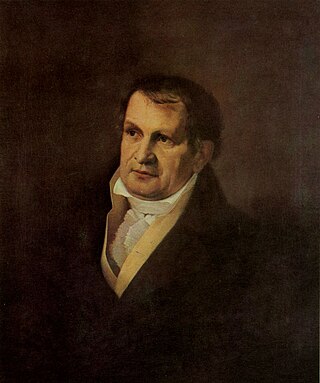
Johann Ludwig Tieck was a German poet, fiction writer, translator, and critic. He was one of the founding fathers of the Romantic movement in the late 18th and early 19th centuries.
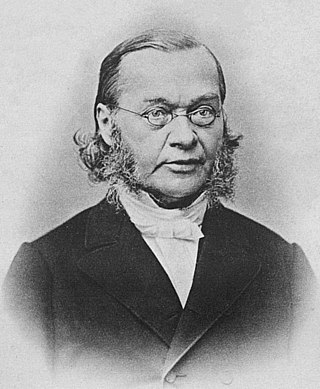
Ernst Wilhelm Theodor Herrmann Hengstenberg, was a German Lutheran churchman and neo-Lutheran theologian from an old and important Dortmund family.
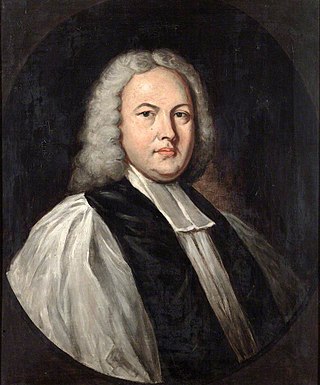
William Warburton was an English writer, literary critic and churchman, Bishop of Gloucester from 1759 until his death. He edited editions of the works of his friend Alexander Pope, and of William Shakespeare.

Connop Thirlwall was an English bishop and historian.
Richard Mant was an English churchman who became a bishop in Ireland. He was a prolific writer, his major work being a History of the Church of Ireland.

Barthold Georg Niebuhr was a Danish–German statesman, banker, and historian who became Germany's leading historian of Ancient Rome and a founding father of modern scholarly historiography. By 1810 Niebuhr was inspiring German patriotism in students at the University of Berlin by his analysis of Roman economy and government. Niebuhr was a leader of the Romantic era and symbol of German national spirit that emerged after the defeat at Jena. But he was also deeply rooted in the classical spirit of the Age of Enlightenment in his intellectual presuppositions, his use of philologic analysis, and his emphasis on both general and particular phenomena in history.

Christian Charles Josias, Baron von Bunsen, was a German diplomat and scholar. He worked in the Papal States and England for a large part of his career.

Christopher Wordsworth was an English intellectual and a bishop of the Anglican Church.
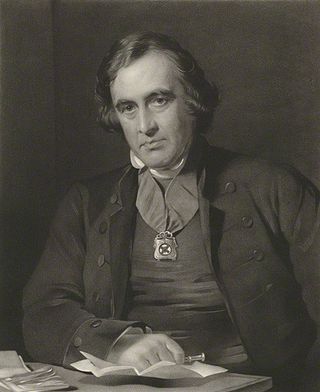
Richard Chenevix Trench was an Anglican archbishop and poet.

John Sterling was a Scottish author.

Friedrich Julius Hammer was a German poet born in Dresden.

Jonathan Shipley was a clergyman who held offices in the Church of England, who became Bishop of Llandaff from January to September 1769 and Bishop of St Asaph from September 1769 until his death.

Charles Richard Sumner was a Church of England bishop.
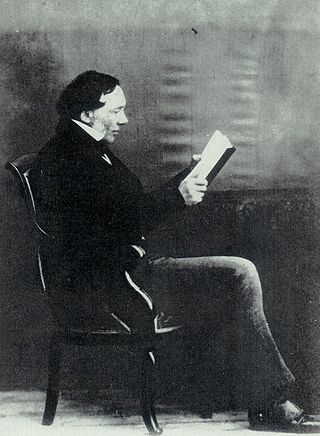
Robert Isaac Wilberforce was an English clergyman and writer.

John Williamson Nevin, was an American theologian and educator. He was born in the Cumberland Valley, near Shippensburg, Franklin County, Pennsylvania. He was the father of noted sculptor and poet Blanche Nevin.
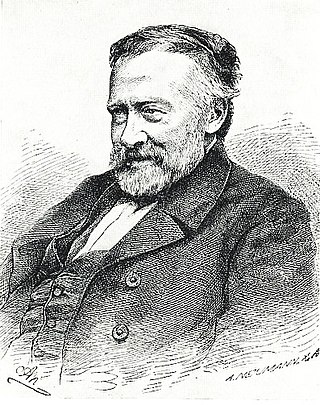
Willibald Alexis, the pseudonym of Georg Wilhelm Heinrich Häring, was a German historical novelist, considered part of the Young Germany movement.

The Life of John Sterling is a biography of the Scottish author John Sterling (1806–1844) written by his friend, the Scottish essayist, historian and philosopher Thomas Carlyle. It was first published in 1851.
Arthur Philip Perceval (1799–1853) was an English high church Anglican cleric, royal chaplain and theological writer.
"Der blonde Eckbert" is a Romantic fairy tale written by Ludwig Tieck at the end of the eighteenth century. It first appeared in 1797 in a collected volume of folktales published by Tieck under the publisher Friedrich Nicolai in Berlin. For some literary scholars and historians, the publication of Eckbert represents the beginning of a specifically German romantic movement.